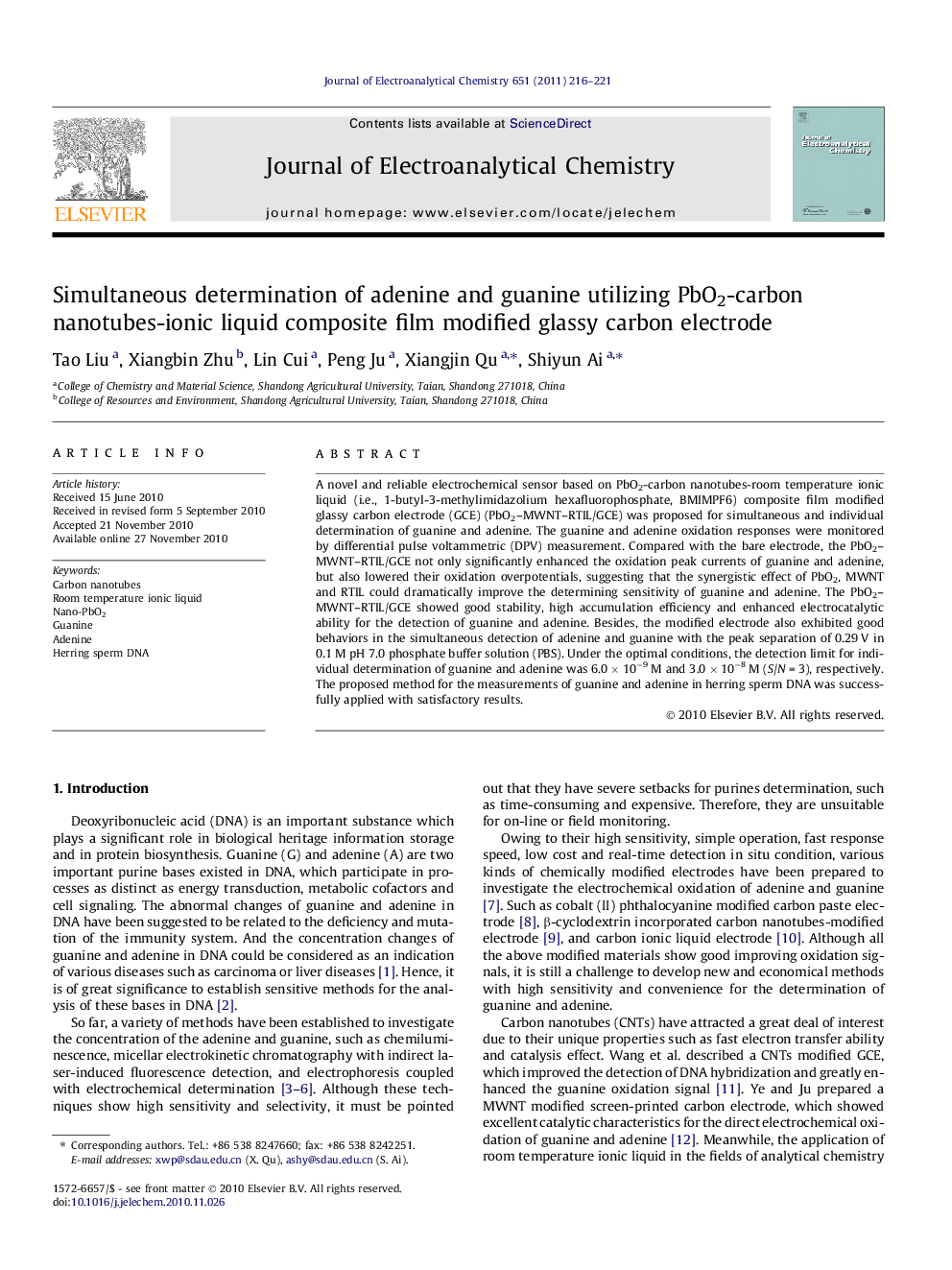| Article ID | Journal | Published Year | Pages | File Type |
|---|---|---|---|---|
| 219805 | Journal of Electroanalytical Chemistry | 2011 | 6 Pages |
A novel and reliable electrochemical sensor based on PbO2-carbon nanotubes-room temperature ionic liquid (i.e., 1-butyl-3-methylimidazolium hexafluorophosphate, BMIMPF6) composite film modified glassy carbon electrode (GCE) (PbO2–MWNT–RTIL/GCE) was proposed for simultaneous and individual determination of guanine and adenine. The guanine and adenine oxidation responses were monitored by differential pulse voltammetric (DPV) measurement. Compared with the bare electrode, the PbO2–MWNT–RTIL/GCE not only significantly enhanced the oxidation peak currents of guanine and adenine, but also lowered their oxidation overpotentials, suggesting that the synergistic effect of PbO2, MWNT and RTIL could dramatically improve the determining sensitivity of guanine and adenine. The PbO2–MWNT–RTIL/GCE showed good stability, high accumulation efficiency and enhanced electrocatalytic ability for the detection of guanine and adenine. Besides, the modified electrode also exhibited good behaviors in the simultaneous detection of adenine and guanine with the peak separation of 0.29 V in 0.1 M pH 7.0 phosphate buffer solution (PBS). Under the optimal conditions, the detection limit for individual determination of guanine and adenine was 6.0 × 10−9 M and 3.0 × 10−8 M (S/N = 3), respectively. The proposed method for the measurements of guanine and adenine in herring sperm DNA was successfully applied with satisfactory results.
